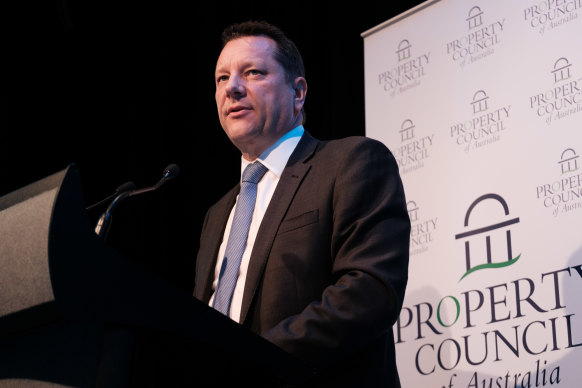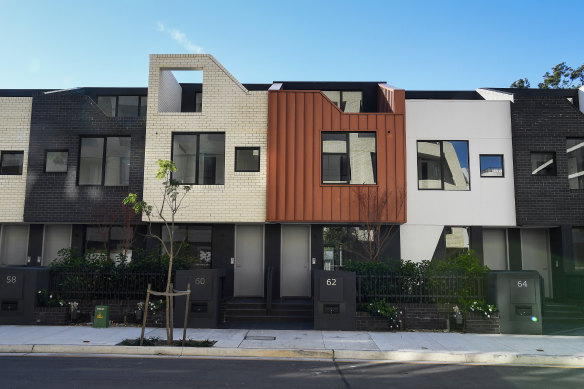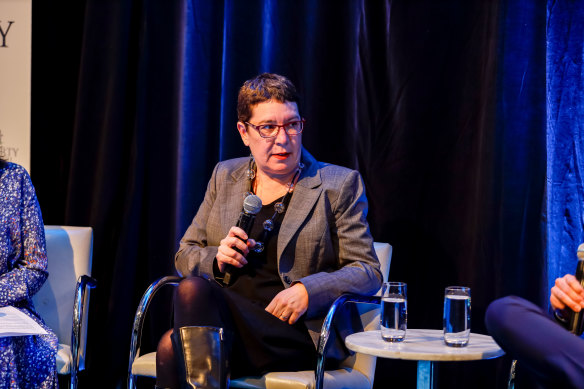The NSW government is considering interventions in local zoning to allow more terraces, manor homes and other housing types and bolster the “missing middle” of Sydney’s housing mix, risking further clashes with councils.
Planning Minister Paul Scully said he was surprised to learn recently that terraces and manor homes – single buildings containing three or four dwellings in one lot, up to two storeys – were banned in 85 per cent of Sydney’s low-density residential zones.

NSW Planning Minister Paul Scully said the government wanted councils to come forward with their own zoning changes.Credit: Oscar Colman
“Townhouses and manor homes are part of the history of Sydney, yet in many places they are being stopped from being part of its future,” Scully told the Property Council of NSW housing summit on Wednesday.
“Let’s say we were able to put a semi on 5 per cent of those 85 per cent of zoned lots. That would deliver 67,500 new homes, which is more than 20 per cent of what we need to build by 2029.”
Under the current state housing code, dual occupancies, manor houses and terraces can be fast-tracked as complying development – but only when councils already allow it under their local environment plans. Heritage conservation areas or “local character areas” are also excluded.
Scully told the Herald he wanted councils to come forward with different types of housing they could accommodate in their areas, and the government was looking at its options, including an incentive system.

Could more modern terrace housing be the answer to Sydney’s housing supply woes? The NSW government wants them allowed in more places.Credit: Kate Geraghty
At present, some are doing the opposite. Bayside Council, near Mascot, has a planning proposal on exhibition to prohibit multidwelling houses in its low-density (R2) zones and ban apartment buildings in its medium density (R3) zones, except for six specific sites.
Acting Planning Department secretary Kiersten Fishburn said terraces and manor houses should not be labelled “density” because the term was often seen as pejorative and caused alarm. “We call them ‘density’. I mean, come on, they’re not,” she said. “Three terraces on a 700-metre block that had one house on it – that is not density, but it scares people off.”
Since coming to office, the government has announced incentives for private developers to build affordable housing, expanded approval pathways for public housing and the folding of the Greater Cities Commission back into the Planning Department. But Fishburn told attendees more policy changes were coming.
“You’ve got 20 levers in front of you; you normally pull four and then check that you don’t crash something. We’re going to try to pull all 20,” she said.

Acting NSW Planning Department secretary Kiersten Fishburn: “You’ve got 20 levers in front of you; you normally pull four and then check that you don’t crash something. We’re going to try to pull all 20.”Credit: Seb Haggett
Fishburn, who worked in local government before joining the bureaucracy, said councils were not always to blame for failing to meet housing targets and many wanted to help increase supply. But for those that didn’t, the government had “sticks” available in the planning system.
“Over the last five [or] six years, government hasn’t used many of them,” she said. “If it ultimately comes down to it, the issue is too large to pussyfoot around with councils who will not play ball.”
Steamrolling local environment plans would be unpopular with many councils, and the peak body Local Government NSW has already criticised the interventions announced to date.
Housing Minister Rose Jackson told the summit that “all options are on the table” but if the government was going to take over, it had to be effective.
“The alternative to councils is the state planning system,” she said. “Is that really functioning as well as it should be? If we’re going to criticise councils, then we also have to be willing to get our own house in order first.”
Scully, Jackson and Fishburn all said the drive to lift density and supply should not come at the expense of building and design quality.
“What we really need from people who are putting up proposals is good proposals,” Scully told developers. “Don’t put up rubbish. The social licence for development has been diminished over time because of rubbish proposals.”
Get the day’s breaking news, entertainment ideas and a long read to enjoy. Sign up to receive our Evening Edition newsletter here.